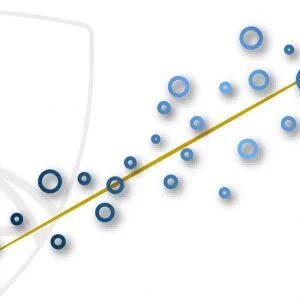
Statistics is the science of turning data into insights and ultimately decisions. Behind recent advances in machine learning, data science and artificial intelligence are fundamental statistical principles. The purpose of this class is to develop and understand these core ideas on firm mathematical grounds starting from the construction of estimators and tests, as well as an analysis of their asymptotic performance. After developing basic tools to handle parametric models, we will explore how to answer more advanced questions, such as the following: How suitable is a given model for a particular dataset? How to select variables in linear regression? How to model nonlinear phenomena? How to visualize high–dimensional data? Taking this class will allow you to expand your statistical knowledge to not only include a list of methods, but also the mathematical principles that link them together, equipping you with the tools you need to develop new ones. This course is part of theMITx MicroMasters Program in Statistics and Data Science. Master the skills needed to be an informed and effective practitioner of data science. You will complete this course and three others from MITx, at a similar pace and level of rigor as an on–campus course at MIT, and then take …
Instructor Details
Courses : 1
Specification: Fundamentals of Statistics
|
4 reviews for Fundamentals of Statistics
Add a review Cancel reply
This site uses Akismet to reduce spam. Learn how your comment data is processed.

| Price | Free |
|---|---|
| Provider | |
| Duration | 216 hours |
| Year | 2020 |
| Level | Expert |
| Language | English |
| Certificate | Yes |
| Quizzes | No |

FREE






Anonymous –
This is a tough course, but very rewarding. It covers some of the basics of estimation, such as maximum likelihood, but in a depth which most courses don’t take. You should be ready for lots of math.
Anonymous –
I took the audit course, and it was great in depth, even introducing some ideas never encountered in my uni statistics course.
Anonymous –
This was a demanding and rewarding course. I felt very in touch with the course team who “poured their hearts” into making it a great experience for every student. Many say that this is the hardest course in the program. I found that concepts were difficult indeed, but I earned a higher grade that originally expected. I think believing in yourself and the support of the course team will make it easier to get through the course. Some of the really challenging concepts were not included in tests. I do believe Probability and solid math prerequisites are a must. This also was my second course in Statistics (MIT’s Stats for Social Sciences was the other one), which made it more manageable. If you have a chance to build solid linear algebra skills prior to the course, you will have a much more comfortable ride. (technically only basic vectors and matrices are strictly required, but I have to say I wish I had a full semester undergrad linear algebra course before enrolling this way I would have gotten more out of the the advanced topics, which were not strictly required for success in this class, but are definitely required for success in the field.)
Anonymous –
It is one of the hardest classes I’ve ever taken. It’s tough and rigorous. Staff team, teach assistants and fellow students was very supportive and always gave some additional clues about existed brainsmashing topics. Thanks all of them. Organisation of the course was also perfect. Yeah, it’s time consuming, you have to reserve at least 15 h/w, but at the end of the day you will be proud that you completed a lot of exercises, homeworks, two midterms and final exam at this really fundamental course.